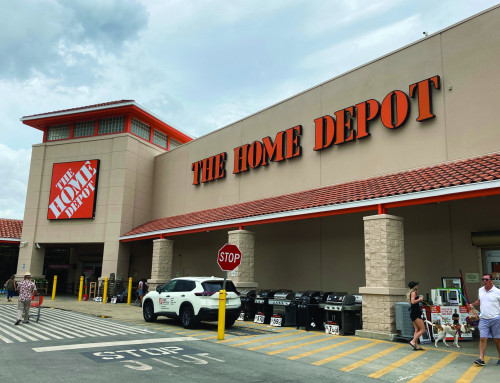NEW YORK (AP) — A tax on tea once sparked rebellion. This time, it’s just causing headaches.
Importers of the prized leaves have watched costs climb, orders stall and margins shrink under the weight of President Donald Trump’s tariffs. Now, even after Trump has given them a reprieve, tea traders say it won’t immediately undo the damage.
“It took a while to work its way through the system, these tariffs, and it will take a while for it to work its way out of the system,” said Bruce Richardson, a tea master, tea historian and purveyor of teas at his shop, Elmwood Inn Fine Teas, in Danville, Ky. “That tariffed tea is still working its way out of our warehouses.”
While a handful of bigger firms are behind the biggest supermarket brands, the premium tea market is largely the work of smaller businesses, from family farms to specialty importers to a web of little tea shops, tea rooms and tea cafes across the United States. Amid an onslaught of tariffs, they have become showcases for the levies’ effects.
On their shelves, selection has narrowed, with some teas now missing because they’re no longer viable products to stock with steep levies on top. In their warehouses, managers are consumed with uncertainty and operational headaches, including calculating what a blend really costs, with ingredients from multiple countries on a roller coaster of tariffs. In backrooms where the wafting scent of fresh tea permeates, owners have been forced to put off job postings, raises, advertising and other investments so they can have cash available to pay duties when their containers arrive at American ports.
“If I were to add up all the money I’ve spent on tariffs that weren’t there a year ago, it could equal a new employee,” said Hartley Johnson, who owns the Mark T. Wendell Tea Company in Acton, Mass.
Johnson’s prices used to stay static for a year or longer. He ate the tariff costs before being forced to respond. His most popular tea, a smoky Taiwanese one called Hu-Kwa, has steadily risen from $26 to $46 a pound.
He knows some customers are reconsidering.
“Where is that tipping point?” Johnson asks. “I’m kind of finding that tipping point is happening now.”
Though Trump backed off some tariffs on agricultural products last week, many in the tea trade are wary of celebrating too soon and caution tea drinkers shouldn’t either. Much of next year’s supply already has been imported and tariffed and the full impact of those duties may not have spilled fully downhill.
Meantime, other tariff-driven price hikes persist. All sorts of other products tea businesses import, from teapots to infusers, remain subject to levies, and costs for some American-made items, such as tins for packaging, have spiked because they rely on foreign materials.
“The canisters, the bamboo boxes, the matcha whisks, everything that we import, everything that we sell has been affected by tariffs,” said Gilbert Tsang, owner of MEM Tea Imports in Wakefield, Mass.
For more than 150 years, most tea has passed through U.S. ports with little to no duties.
That began to change in Trump’s first term with his hardline approach to China. Yet nothing compared to what came with his return to the White House.
In July, the most recent month for which the U.S. International Trade Commission has tallied tariff numbers, tea was taxed at an average rate of more than 12 percent, a huge increase from a year earlier when it was just under one-tenth of a percent. In that single month, American businesses and consumers paid more than $6 million in tea import taxes, amassing in just 31 days more tariffs than any previous full year on record.
All told, tea importers paid about $19.6 million in tariffs in the first seven months of 2025, nearly seven times as much as the same period last year.








